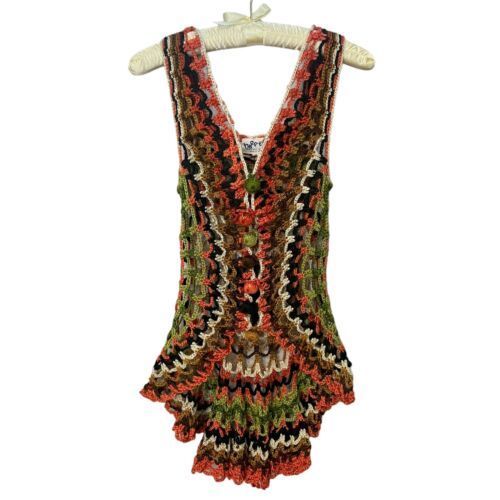#Reseller #WorthPoint

many resellers focus only on clothing or a particular style.
Reselling for profit is simple: buy used stuff, sell it online, make money, repeat. But that doesn’t mean it’s easy. Realistically, it can be frustrating, tedious, and often downright exhausting. I’ve gathered some rtips to help you in your journey, especially if you’re considering this gig that can earn you extra income or become a full-time career.
Getting Started
While many resellers successfully market products across all sales categories, I firmly believe in focusing on a specific niche, for example, mid-century modern dresses or a particular style of pottery. Narrowing your focus requires research to find the right product and who’s buying it. Here are some tips:
- Follow the Leaders: After years of selling my handmade flower art on Etsy, I switched to selling antiques and vintage with my partner Dave a few years ago. We started by listing things around the house on Etsy and eventually on eBay. We began following successful eBayers on YouTube, like Cincinnati Picker, Justin Resells, The Antique Nomad, and The Nurse Flipper, to gain insight and confidence as we navigated eBay’s massive global sales platform.
- Do Your Research: I rely heavily on the Worthpoint database, which offers detailed and extensive sales trends on an endless supply of products. As a vintage seller, I use Worthpoint’s collection of more than 270,000 company marks and logos to help me determine a vintage piece’s history and value.
- Run the Numbers: I combine my Worthpoint findings with eBay’s Product Research Tool (formerly Terapeak), which provides up to three years of sales data. I calculate the product’s Sales Conversion Rate (Sales/Product Views) x 100 to tell me if the item is worth reselling on eBay. Generally, on eBay, you want at least a 50% conversion rate, also known by eBayers as a “Sell-Through Rate,” but this depends on the category, so take the figure in stride and do your homework.
- Buy Wisely: From my experience, the key to making a profit in reselling lies not in the sale but in the purchase. Run the numbers before buying to ensure you make a profit. I try for a minimum $25 profit on each item sold while keeping my eye on my monthly bottom line.
- Stay Organized: As your business grows, you may want to expand to other platforms, including Mercari, DePop, Etsy, Ruby Lane, and Poshmark. Once you do that, I suggest implementing a listing service like Flyp or List Perfectly. Once an item sells on one platform, these programs quickly delist it from the others, keeping inventory updated and accurate.
- Create Attractive Listings: As with any successful online selling, choosing product keywords is paramount because they ensure my items are discoverable by online buyers. I rely on the Keywords Everywhere program to select the best keywords and phrases for my listing title and product description, particularly in my Etsy shop and on social media. If you’re new to eBay, start your first listing by copying the titles of similar sold items. Take high-quality photographs in good light and note any flaws in the piece. While most vintage buyers understand that signs of use and wear are part of the charm of older items, others may not, so it’s crucial to cover all your bases to avoid getting an INAD (Item Not As Described) complaint on eBay or just having the piece returned.
- Keep Accurate Records: Whether you use a Google spreadsheet or a service like Quickbooks or SellerLedger, keeping good business records makes tax time less stressful.
- Be Consistent: As a part-time reseller with a full-time day job, I’m familiar with the struggle for work/life balance. But I’ve learned that successful selling on marketplaces like eBay, Etsy, Mercari, and Poshmark requires one essential habit—consistency. I list items daily on eBay, regardless of whether I upload one on tough days or 15 on good ones.
- Remember Your Long Game: My long-term goal is to retire from full-time work and focus solely on my reselling business and blogging. That dream may be different for you, but keep it close to remind you why you’re doing this in the first place—especially when challenges occur, and they will.
“Reseller” Is Not a Bad Word
I ran into my first grumpy shopper at a thrift store when I started reselling. She noticed me on my phone comparing prices on some items and said resellers “ruin it for the rest of us” by buying up all the “good stuff” and selling it for a higher price. Suffice it to say I beg to differ. Thrift stores, yard sales, estate, and rummage sales are consistently packed with castoff goods, so there’s room for all of us, and life is too short to argue with a stranger in a thrift store. Besides, I more frequently get questions from those thinking about how to start reselling, which gives me a chance to educate someone. In the end, it all evens out.

like this Apple II software that sold for $120 in 2024.
Kristin Urquhart of The Vintage Seeker said it best, writing that reselling has existed for a long time but has become more visible through social media. “Blaming resellers for tapping into an existing audience is unwarranted,” she wrote. “The opportunity was always there. Resellers just found it first.”
Being a thrifter almost all my life with a mom who relied on Depression-era tactics to save money, I sometimes wonder why I didn’t start reselling earlier. Still, here I am, enjoying the thrill of the hunt, keeping stuff out of landfills, and finding friends among a diverse and supportive selling community.
If you’re still on the fence about reselling, dip your toe in—the water’s warm!
Between excursions to hunt for antiques and vintage décor, Lynda Houston is busy restoring her 1950s cottage in Cincinnati, Ohio. She and her partner, Dave Beck, operate TheRustInPeaceShop on Etsy.
WorthPoint—Discover. Value. Preserve.




